
Ollas: Water Your Garden the Ancient Way
Last Updated: Feb 26, 2025As climate change accelerates, more extreme weather events begin to emerge across the world. From extreme temperatures and drought to flash floods, these events have devastating effects on the people and environments trapped beneath them. Weather events such as the "heat dome" that affected the Pacific Northwest towards the end of June 2021 shattered the regional weather records day after day. This heat, paired with the prolonged drought, left the environment parched and primed for deadly wildfires that would soon begin.
On days, weeks, or months like this, it can be difficult and downright dangerous to be outdoors too long in the heat without breaks. Missing a day in the garden at these temperatures can dry the soil and leave your plants struggling for water, stressing them and damaging their longer-term viability. But when misting your plants causes sunburn and laying water on the surface causes it to evaporate quickly, what can a gardener do? Ollas, a 2,000-year-old irrigation technique, could be just what your garden needs!
Table of Contents
- What Are Ollas?
- Who invented Ollas?
- How Do Garden Ollas Work?
- Where Can You Use Ollas?
- What Plants are Ollas Best For?
- How Big Should an Olla Be?
- Are Ollas Sustainable?
- How Much Water do Ollas Save?
- How Often Do You Fill Ollas?
- Can You Buy Ollas?
- Can You Make Ollas?
- Does The Size Of The Olla Matter?
- What Are The Cons of Ollas?

What Are Ollas?
The word olla (pronounced "oy-yah") derives from the Spanish word for a clay pot, though these ollas are typically for cooking. When used for crop irrigation, ollas are made of unglazed clay or terracotta and traditionally have an elongated, tapered neck.
Who invented Ollas?
While there is some debate on whether ollas originated in Northern Africa or China, burying clay pots for pitcher irrigation first appeared in ancient Chinese texts. It appeared in the world's first agricultural science textbook, the Fan Sheng-Chih Shu, over 2,000 years ago. Despite the simplicity of the design, ollas are still used today in various countries, including India, Iran, Brazil, and Burkina Faso.

How Do Garden Ollas Work?
Pitcher irrigation with ollas works by burying the unglazed clay or terracotta containers in the ground up to the neck. Doing this keeps the water protected from the sun, reducing evaporation and allowing it to seep out into the soil around the roots, where the plants need it most. As water oozes through the subsurface clay pot, it allows for a slow, even liquid release via soil moisture tension. Once the soil is thoroughly saturated, this same process prevents excess liquid from oversaturating the ground. Eventually, the adjacent plant roots will grow around the olla and pull water as they need it.
Where Can You Use Ollas?
Ollas are great for drylands with oppressive heat and minimal rainfall. Still, they can be helpful in various climates, aiding with water management for both small-scale farms and at-home gardens!
Pitcher irrigation with an olla is efficient in a home garden because they are buried under the ground and release water directly to the roots of the plants. This practice reduces the amount of water lost to evaporation and can save as much as 70% of the water used. By adding water to the pot and then covering the opening with a cap, you prevent evaporation, mosquito breeding, and soil intrusion.
What Plants are Ollas Best For?
This watering strategy is beneficial for most garden plants, except those similar to the fast-growing squash, which can drink more than the pots release in a day. Pitcher irrigation can also aid a perennial garden, including your backyard's food forest, for multiple years. It is important to note that with some woody perennial plants, it is likely that the roots will eventually break through the pots in an attempt to get to the water. That said, ollas are a great way to establish trees in an orchard, keeping them watered long enough for the roots to tap the water table.

How Big Should an Olla Be?
Depending on your garden's size, you will need varying sizes of olla. For small container gardens, consider smaller ollas. In contrast, if you have a large container or in-ground garden, install a large 12-18 inch olla with plants placed within a 36-inch diameter of the pot.
Sunset magazine recommends placing ollas between 3 and 5 feet for vertical growing plants, like corn. And, for vining crops, consider placing an olla every 9 feet.
Are Ollas Sustainable?
Ollas are a low-tech strategy used for thousands of years. They have the advantage of being made from clay, a natural product that won't break down into potentially toxic substances. When purchased from rural or small-scale local businesses, these support a healthy local economy, further reducing the environmental cost of importation and the total embodied carbon of the product.

How Much Water do Ollas Save?
Ollas shine in sites prone to extended periods of drought, where an olla can save between 50 and 70 percent more water than traditional irrigation methods by preventing water loss due to evaporation and percolation. Pitcher irrigation isn't just for a large garden or farm, though, and can be an excellent addition to a home's backyard vegetable garden.
Unlike flood irrigation or spot watering, ollas keep your garden watered through soil moisture tension. This natural process pulls water through the porous walls of the container into the dry soil beyond. It allows water to flow at an even rate through the pot in contrast to quick and free drainage of some garden soil. The nice thing is, once the ground is thoroughly saturated, the water will not transfer out of the olla.
The thirsty plant roots will eventually grow in the direction of their water source, sipping from the walls of the olla as needed. This strategy gives your plants consistent watering, which can be one of the significant troubles with gardening. This irrigation strategy reduces the amount of labor you're required to do in the long run, saving you time, energy, and money.
How Often Do You Fill Ollas?
Several factors come into play when a gardener is determining how often they should refill their ollas. Each site will be different, but to guide you consider your plant's specific water needs, garden soil type, time of year, and even the overall environment of your property.
A typical olla will allow water to flow through it over a period between 24 and 72 hours. Olla users recommend checking your ollas regularly and filling them up when the reservoir is under 50 percent. This frequency helps reduce the likelihood of salt residue buildup over the surface, potentially reducing the seepage rate.
As a sidenote, gardeners can also add liquid fertilizer to ollas as an easy way to feed their plants! By occasionally including the appropriate amount of water-soluble fertilizer as recommended by the product's instructions, gardeners can place food right at the plant's roots.
Gardening & Outdoor
Shop the best high-performing gardening and outdoor products that impact your health, wealth, and the planet through their use.
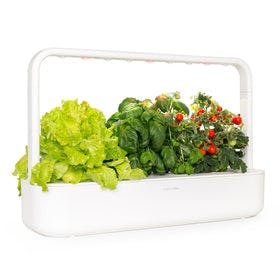
Click & Grow Smart Garden 9
Click & Grow
In Stock
3 Colors
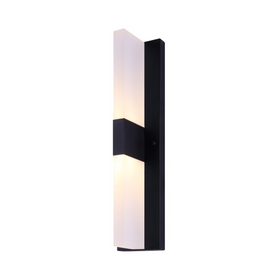
Canarm CORIN LED Black Outdoor Light
Canarm
Out of Stock
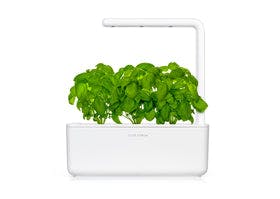
Click & Grow Smart Garden 3
Click & Grow
In Stock
3 Colors
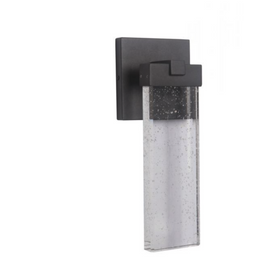
Craftmade Aria Outdoor LED Wall Mount Light
Craftmade
In Stock
2 Colors
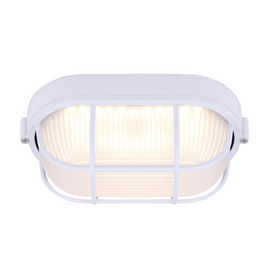
Canarm LOL386WH White LED Outdoor Sconce
Canarm
In Stock
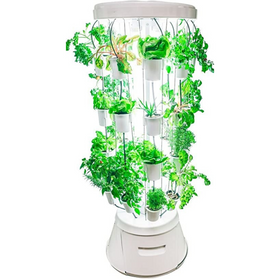
Nutritower Vertical Hydroponic Indoor Garden
Nutritower
Out of Stock
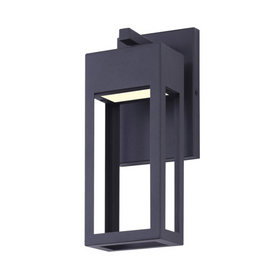
Canarm FAE LED Black Outdoor Light
Canarm
In Stock
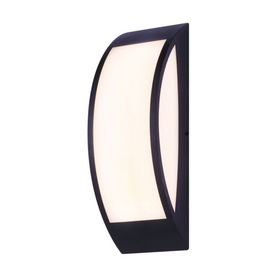
Canarm BARDO LED Black Outdoor Light
Canarm
In Stock
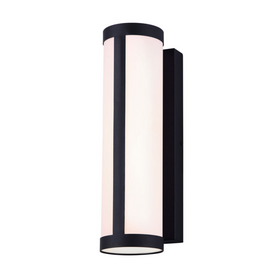
Canarm SINDRI LED Black Outdoor Light
Canarm
In Stock
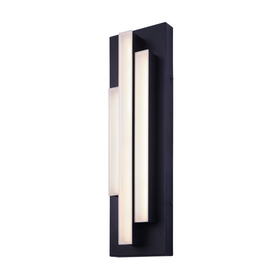
Canarm LOKI LED Black Outdoor Light
Canarm
In Stock
Can You Buy Ollas?
It is possible to purchase an ideal unglazed clay or terracotta pot with a large body and long neck. However, these can be difficult to find in local stores and run the risk of inflated costs due to the container's unique design. When purchasing an olla, ensure that the product is unglazed and does not contain any finishes that may leach out into the soil or water.

Can You Make Ollas?
It is possible to make an olla in your backyard with two unglazed clay pots and waterproof adhesive. Begin by selecting containers that will match your garden's specific needs, including your plant's water and root distribution requirements.
Once you have selected your containers, tape the outside-bottom hole of one pot, and fill the inner cavity with a non-toxic adhesive. This step prevents the held water from escaping from the bottom of the pot into the soil. Allow this to dry thoroughly before continuing.
Then apply the sealant around the rim of the pot and stick the second container on top. Ensure to leave at least one pot's drainage hole open as this is where you will add the water. Let the pots sit for at least 24 hours to dry, then check to see the olla will hold water before you bury it.
Finally, bury the olla, leaving 5 cm (2 in) exposed above ground, and place the clay pot saucer over the top of the olla to seal the opening. As a final step, you can glaze the exposed layer of the pot and saucer to prevent evaporation through these surfaces.
Does The Size Of The Olla Matter?
When purchasing or creating your olla, the size of the container will make a slight difference in certain situations. When examining small, medium, and large containers, the water content of an olla will transfer to the surrounding soil at a comparable rate regardless of container size.
That said, larger containers have the advantage of increased reservoir size, reducing the amount of time you need to spend refilling it. This extra space also provides more exterior surface area for plant roots to adhere.
You can estimate that a 3-gallon olla will, on average, have the volume to water a 3-foot diameter circle for 3 to 7 days. For a container garden, consider a smaller olla appropriate to the size of your garden.
What Are The Cons of Ollas?
Ollas are a great addition to the garden, but why isn't this ancient technique more commonplace in arid region gardens and yards across North America? Aside from being difficult to find locally and potentially costly, there isn't much research into what makes an ideal garden olla. This lack of research has led to a wide range of designs and strategies, each unique to the gardener's specific climate and home.
Since ollas are an agricultural tool in arid regions, there isn't much data for how well they will hold up in winter zones with a hard freeze. Homeowners in these zones should anticipate the container breaking over winter and remove them in the fall before the ground freezes.
Homeowners can also expect container breakage when pairing ollas with woody perennial plants. Ollas are great for establishing woody shrubs or young trees, but the greedy plant roots will push through the pot after a few years to get to the moisture. Lucky, by the time this happens, the tree's roots should already be well established and capable of gathering the water themselves.
Aside from these few concerns, ollas can be a great addition to any home. They truly shine in arid regions where they make use of every drop of water, saving gardeners from the woes of venturing out to rescue parched plants. Whether you purchase a proper olla or make one yourself, your plants will thank you on the next hot day that settles into your region.
Tanner Sagouspe
Tanner Sagouspe has a Masters in Environmental Management and is a Permaculture Designer who promotes tackling the climate crisis at home.




